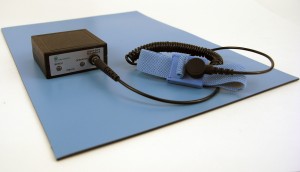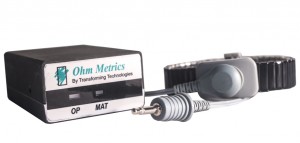This week’s ESD Q&A question comes from StaticCare reader Gina, she asks:
Question: What would be the the advantages or disadvantages of using a single wire or dual wire monitor?
Answer:
Hello Gina,
This is a good question.
Single wire monitors work on capacitance or inductance and use single wire wrist straps. They send a signal
down the wire to the wrist strap and expects to encounter some capacitance (approximately that of a person). If there is a mass indicated at the end of the coil cord, the monitor assumes that the person is connected.
These systems work okay, but they can be fooled. Some people have dry skin and do not make good contact with the wrist strap. The single wire monitors are not able to detect if the person is actually electrically connected.
Dual wire monitors are resistance based and they use dual wire wrist straps. They send a voltage up one wire and expect to receive a signal back from the second wire.  The wrist strap is divided and it relies on the operator’s skin to close the loop.  When this happens you can be assured that the operator is connected and that voltage is being drained through the wrist strap.  If the operator’s skin is dry and does not allow for the current to flow from one side of the strap to the other, the alarm will sound.
Dual wire monitoring is the only true wrist strap monitoring technology available. Single wire systems simply detect that a person is wearing a wrist strap and put the monitor into an unalarmed state. Resistance monitors actually measure the resistance of the wrist strap in combination with the person and alarm if the product exceeds preset levels. This accurate measurement ensures reliability.



